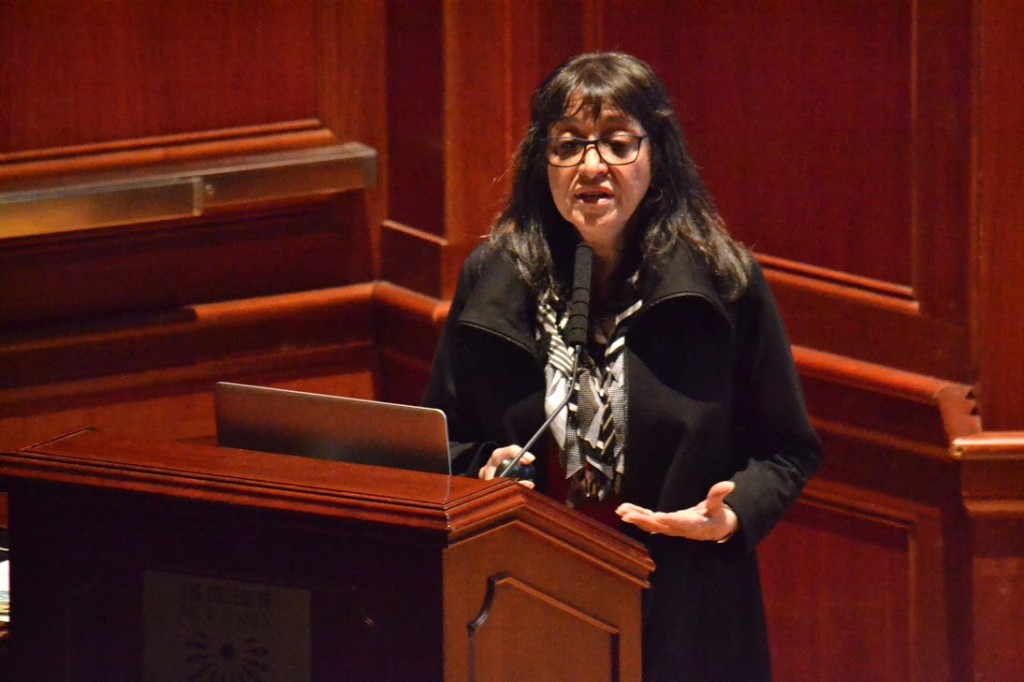By Ashley Skowronek
Correspondent
The Department of Art and Art History welcomed a renowned art educator on Wednesday, April 13, as part of the 2015-2016 Visiting Scholar Series. The presentation guided viewers through empirical illumination by observing formal, thematic and contextual qualities palpable in works of art.
Artist Renee Sandell discussed the decoding and encoding of art by identifying how the work “is,” what the work is about and when, where, by whom and why the work was created or valued.

“It’s the connection between them that is really important,” Sandell said.
“The Great Wave Off Kanagawa,” by Katsushika Hokusai, remains an iconic piece in today’s culture through its innumerable reproductions in art, fashion and jewelry. But much more significance lies behind the Japanese illustration of massive, cresting ocean waves.
“I suggest we use FTC (form, theme and context) to get deeper into the meaning of the work and why it’s meaningful to us,” Sandell said.
Pattern, rhythm and the contrast of positive and negative spaces can be used to interpret art conceived during this time in Japanese culture. The piece delves into the “big idea” of nature overpowering man and other themes that mark water as a major force humans must overcome.
Hokusai’s art can be directly related to thematic plots in films, such as “Jaws,” “The Perfect Storm” and “Life of Pi,” as well as literary works, like “Moby Dick,” “The Odyssey” and “The Old Man and the Sea.” Similar to “The Great Wave,” these contemporary stories incorporate ways of intensifying our cognizance of the power of nature.
While the contextual elements in the piece are related to environmental disasters, global warming and political crises, the art also symbolizes passion for unremitting problem solving and letting go.
Sandell made the comparison of looking at art to eating an artichoke. One cannot simply pick up an artichoke and eat it. However, through perseverance, you ultimately will get past the hard outer layers and reach the soft, palatable heart.
That is the true essence of the piece, according to Sandell.
“The only real voyage of discovery consists not in seeking new landscapes, but in having new eyes — in seeing the universe through the eyes of another, one hundred others — in seeing the hundred universes that each of them sees,” Sandell said, referencing prose from French novelist Marcel Proust. This ideology encompassed the collective motif of the presentation.
“Use FTC to make meaningful connections, not separate them,” Sandell said.
Sandell’s illustrious career includes serving as a professor of art education at George Mason University and Maryland Institute College of Art, co-authoring two books based on gender issues present in art education and receiving the 2013 National Art Educator of the Year Award through the National Art Educator Association.






